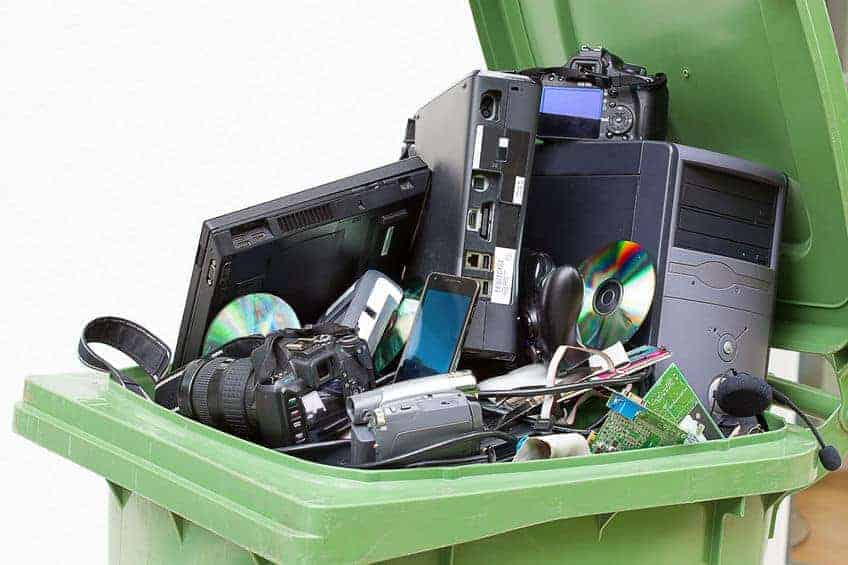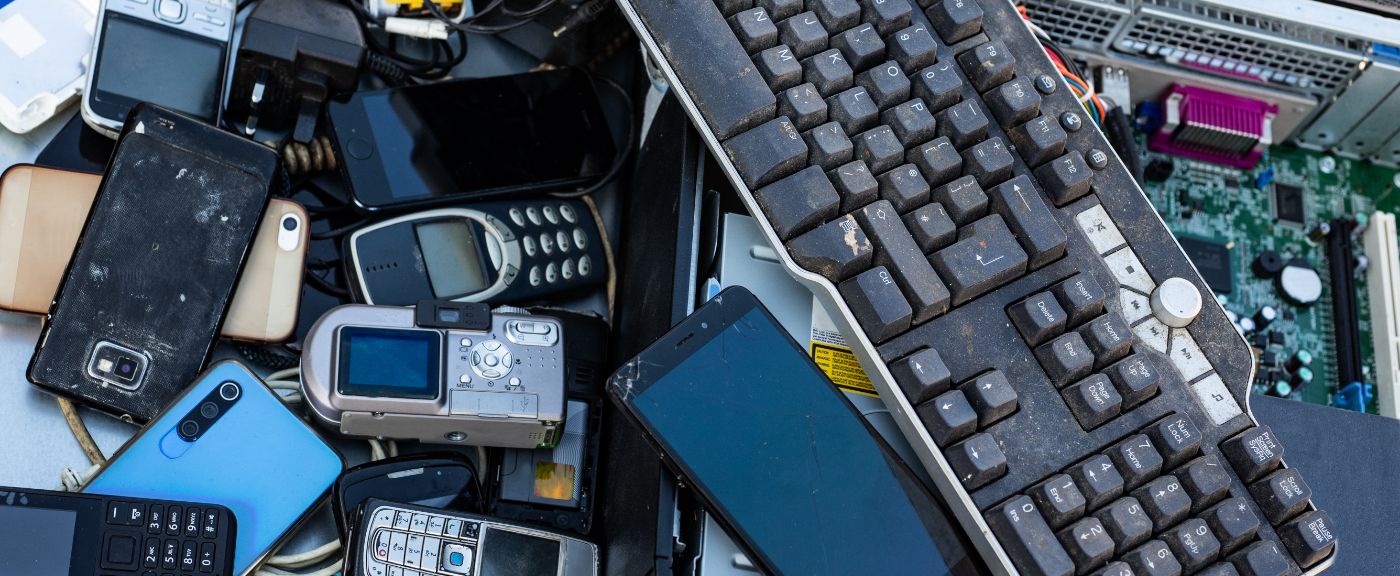Elevate Your E-Waste Management With R2 Qualification: a Comprehensive Overview
One key technique to boost e-waste administration techniques is by attaining R2 accreditation. By discovering the benefits and processes linked with R2 accreditation, a deeper understanding of exactly how it can reinvent e-waste monitoring methods emerges, dropping light on a course in the direction of sustainability and ethical disposal practices.
Value of E-Waste Monitoring

When e-waste is not taken care of properly, these toxic compounds can permeate into the ecological community, causing injury to wildlife and potentially getting in the food chain, presenting risks to human health and wellness. In addition, the improper disposal of e-waste adds to pollution and greenhouse gas emissions, exacerbating climate modification and ecological destruction.
/cdn.vox-cdn.com/uploads/chorus_image/image/63699193/recycle.0.1549465291.0.png)
Benefits of R2 Certification

First of all, R2 certification improves credibility by showcasing a company's devotion to sustainable practices. It ensures customers, partners, and stakeholders that the firm abides by rigid standards for e-waste administration - r2 certification. This reputation can result in increased depend on and boosted relationships with clients that focus on environmental obligation
Second of all, R2 qualification helps minimize threats connected with incorrect e-waste disposal. By adhering to the strict guidelines set forth by the qualification, companies can decrease the likelihood of data violations, ecological contamination, and legal consequences. This positive strategy safeguards the firm's reputation and reduces prospective responsibilities.
Last but not least, R2 qualification demonstrates a commitment to environmental stewardship - r2 certification. By responsibly managing electronic waste through accredited procedures, companies add to the preservation of sources, decrease of contamination, and promo of a circular economic situation. This dedication not just profits the setting however likewise lines up with progressing customer expectations for sustainable company techniques
R2 Accreditation Process Introduction
Having developed the benefits of R2 accreditation in advertising reputation, threat mitigation, and ecological stewardship, it is vital to now lay out the comprehensive process involved in acquiring this accreditation. The R2 accreditation process begins with a thorough testimonial of the company's operational plans and treatments to ensure conformity with the R2 requirement. This initial assessment is critical in determining any type of gaps that need to be dealt with before continuing even more.
Once the company's practices straighten with the R2 common demands, an independent third-party auditor conducts an on-site audit to review the application and effectiveness of these techniques. This audit includes a comprehensive evaluation of documentation, meetings with team, and physical assessments of facilities to verify conformity.
Complying with an effective audit, the organization obtains a certification decision based on the auditor's searchings for. If authorized, the organization is granted R2 accreditation, showing its commitment to liable e-waste management. It is essential to note that preserving R2 qualification requires recurring compliance with the requirement's needs and periodic audits to make sure continued adherence to finest techniques in e-waste recycling and disposal.
Key Requirements for R2 Conformity
A vital facet of achieving R2 conformity is making certain that all electronic waste (e-waste) processing facilities fulfill stringent environmental and security criteria. To comply with R2 demands, companies have to abide by key requirements that concentrate on liable e-waste monitoring practices. These criteria include carrying out a recorded ecological, wellness, and safety management system, guaranteeing the protected handling of data-containing gadgets, and performing thorough downstream due persistance to track the last location of e-waste products.
In addition, R2 conformity demands the correct screening, repair, and recycling of digital devices to expand its useful life read what he said and minimize ecological effect. Facilities seeking R2 qualification have to also focus on employee health and wellness by supplying needed training, individual protective equipment, and a safe working atmosphere. Additionally, maintaining detailed documents of e-waste handling activities and frequently undergoing audits by accredited certifying bodies are vital components of showing continuous compliance with R2 criteria.
Influences of Sustainable E-Waste Practices
The implementation Click This Link of lasting e-waste methods in accordance with R2 compliance not just makes sure environmental and safety and security requirements are met but additionally considerably impacts the general lifecycle of digital products. By sticking to R2 requirements, electronic waste monitoring processes come to be much more efficient, minimizing the environmental footprint of digital products. Lasting e-waste practices promote the appropriate disposal of digital elements, ensuring that harmful materials are taken care of properly and do not wind up contaminating the environment.
In addition, sustainable e-waste practices can contribute to job creation in the recycling and refurbishment industries, promoting financial growth while promoting environmental obligation. Generally, the fostering of lasting e-waste methods under R2 qualification offers as a critical action towards achieving a much more ecologically sustainable electronics industry.
Conclusion
To conclude, implementing proper e-waste management techniques is essential for environmental sustainability and resource preservation. R2 qualification plays a vital duty in making sure accountable handling and disposal of electronic waste. By adhering to the rigorous requirements stated by R2 criteria, companies can not just minimize their environmental impact but additionally add to a much more sustainable future for generations to find.
One secret approach to raise e-waste management practices is by get redirected here acquiring R2 qualification. By checking out the procedures and benefits linked with R2 accreditation, a much deeper understanding of exactly how it can transform e-waste management strategies emerges, shedding light on a course towards sustainability and moral disposal methods.
The R2 certification procedure starts with a complete review of the company's operational plans and procedures to make certain compliance with the R2 criterion. If authorized, the company is approved R2 certification, demonstrating its dedication to accountable e-waste management. Generally, the adoption of lasting e-waste practices under R2 accreditation offers as a critical step in the direction of achieving an extra environmentally sustainable electronic devices industry.